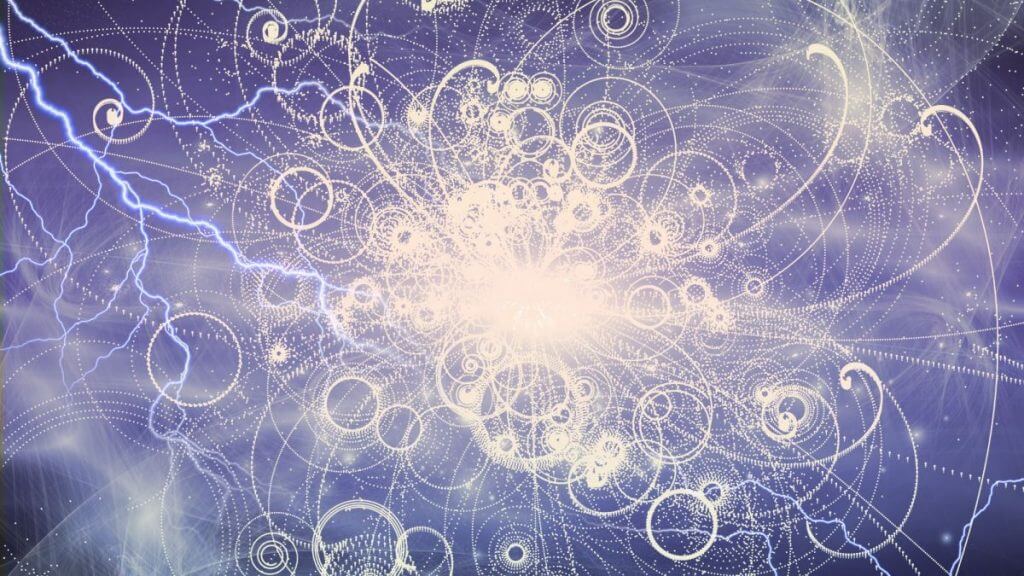
Strange quark star may have formed from a lucky cosmic merger (Image Credit: Space.com)
The universe may contain extremely dense and exotic hypothetical cosmic objects known as strange quark stars. While astrophysicists continue to debate quark stars’ existence, a team of physicists has found that the remnant of a neutron star merger observed in 2019 has just the right mass to be one of these strange quark stars.
When stars die, their cores compress to such incredible degrees that they become entirely new kinds of objects. For example, when the sun finally flickers out, it will leave behind a white dwarf, a planet-size ball of highly compressed carbon and oxygen atoms. When even larger stars explode in cataclysmic explosions called supernovas, they leave behind neutron stars. These incredibly dense objects are only a few miles across but can weigh a few times the mass of the sun. As their name suggests, they are made almost entirely of pure neutrons, making them essentially kilometers-wide atomic nuclei.
Neutron stars are so exotic that physicists do not yet fully understand them. While we can observe how neutron stars interact with their surroundings and make some good guesses as to what’s happening to all that neutron matter near the surface, the makeup of their cores remains elusive.
Related: Are quark stars possible?
The problem is that neutrons are not totally fundamental particles. Even though they bundle with protons to form atomic nuclei, neutrons themselves are made of even smaller particles called quarks.
There are six kinds, or “flavors,” of quarks: up, down, top, bottom, strange and charm. A neutron is composed of two down quarks and one up quark. If you squish too many atoms together, they revert to a giant ball of neutrons. So, if you squish too many neutrons together, do they revert to a giant ball of quarks?
Strange matters
The answers vary from “maybe” to “it’s complicated.” The problem is that quarks really do not enjoy being alone. The strong nuclear force, which binds quarks in a nucleus, actually grows with distance. If you try to pull two quarks together, the force pulling them back increases. Eventually, the attractive energy between them becomes so large that new particles appear in the vacuum, including new quarks that are more than happy to bind with the separated ones.
If you were to fashion a macroscopic object out of the up or down quarks that make up a neutron, that object would explode very quickly and very violently.
But there might be a path using strange quarks. By themselves, strange quarks are pretty heavy, and when they’re left alone, they rapidly decay into the lighter up and down quarks. When large numbers of quarks group together, however, the physics may change. Physicists have found that strange quarks can bind with up and down quarks to form triplets, known as “strangelets,” that might be stable — but only under extreme pressures. Like the pressures one step above a neutron star.

Cosmic collisions
If you compress a neutron star too much, all the neutrons lose their ability to support the star, and the whole thing implodes to make a black hole. But there may be a step squeezed in between there, where the pressures are high enough to dissolve the neutrons and to form a strange quark star but not intense enough for gravity to take complete control.
Astronomers don’t expect to find a lot of strange stars in the universe; these objects have to be heavier than neutron stars but lighter than black holes, and there isn’t a lot of wiggle room there. And because we don’t fully understand the physics of strangelets, we don’t even know the precise masses where strange stars could exist.
But recently, a team of astronomers looked at GW190425, a gravitational wave event triggered by the merger of two neutron stars observed in 2019. Along with tremendous amounts of gravitational waves, merging neutron stars produce a kilonova, an explosion that’s more powerful than a regular nova but weaker than a supernova. Although astronomers weren’t able to capture an electromagnetic signal from this event, they did see a similar one in 2017 that produced both gravitational waves and radiation.
When two neutron stars merge, there are a few options available depending on their masses, their spins and the angle of the collision. According to theoretical calculations, the neutron stars could obliterate each other, form a black hole, or make a slightly more massive neutron star.
And according to the new research, which was recently posted to the preprint database arXiv, these cosmic collisions may make a strange quark star.
The team calculated that the mass of the object left behind by the 2019 merger was somewhere between 3.11 and 3.54 solar masses. Based on our best understanding of the structure of neutron stars, that’s just a bit too heavy, and it should have collapsed into a black hole. But it also falls within the mass range allowed by models of these strange stars’ structures.
It’s still too early to tell if GW190425 is our first observation of a rare strange quark star, but future observations (and more theoretical work) may help astronomers pin down one of these exotic creatures.
Follow us on Twitter @Spacedotcom and on Facebook.





